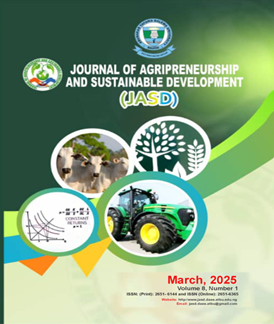PESTICIDE RESIDUES IN CROPS: SOURCES, MEASUREMENTS AND REMEDIES (REVIEW)
Keywords:
Ecosystem, Environment, Food, Man and PesticideAbstract
Pesticide residues persist in the environment, contaminate food, and contribute to the development of pest resistance. This review examines the detrimental effects of pesticide residues in agricultural produce and explores potential solutions. While pesticides are crucial for controlling insect infestations and minimizing crop losses, their overuse and misuse has severe consequences. There are various methods for measuring pesticide residues in crops, and these include gas chromatography, liquid chromatography, and mass spectrometry. Pesticide residues present on air, water, soil, animals, and the environment, have adverse effect on human health such as cancer, neurological disorders, and reproductive issues. Therefore, there is need for alternative pest control methods that minimize environmental and health risks. These include biological control, integrated pest management, and the use of biopesticides. Proper pesticide labeling, rational use and effective post-marketing surveillance are very important to ensure pesticide safety. The need for sterner regulations and enforcement to minimize pesticide residues in agricultural produce and protect human health and the environment are crucial. This will aid in promoting sustainable agricultural practices that prioritize ecological balance and minimize reliance on synthetic pesticides.
Downloads
Downloads
Published
How to Cite
Issue
Section
License
Copyright (c) 2025 Journal of Agripreneurship and Sustainable Development

This work is licensed under a Creative Commons Attribution 4.0 International License.



